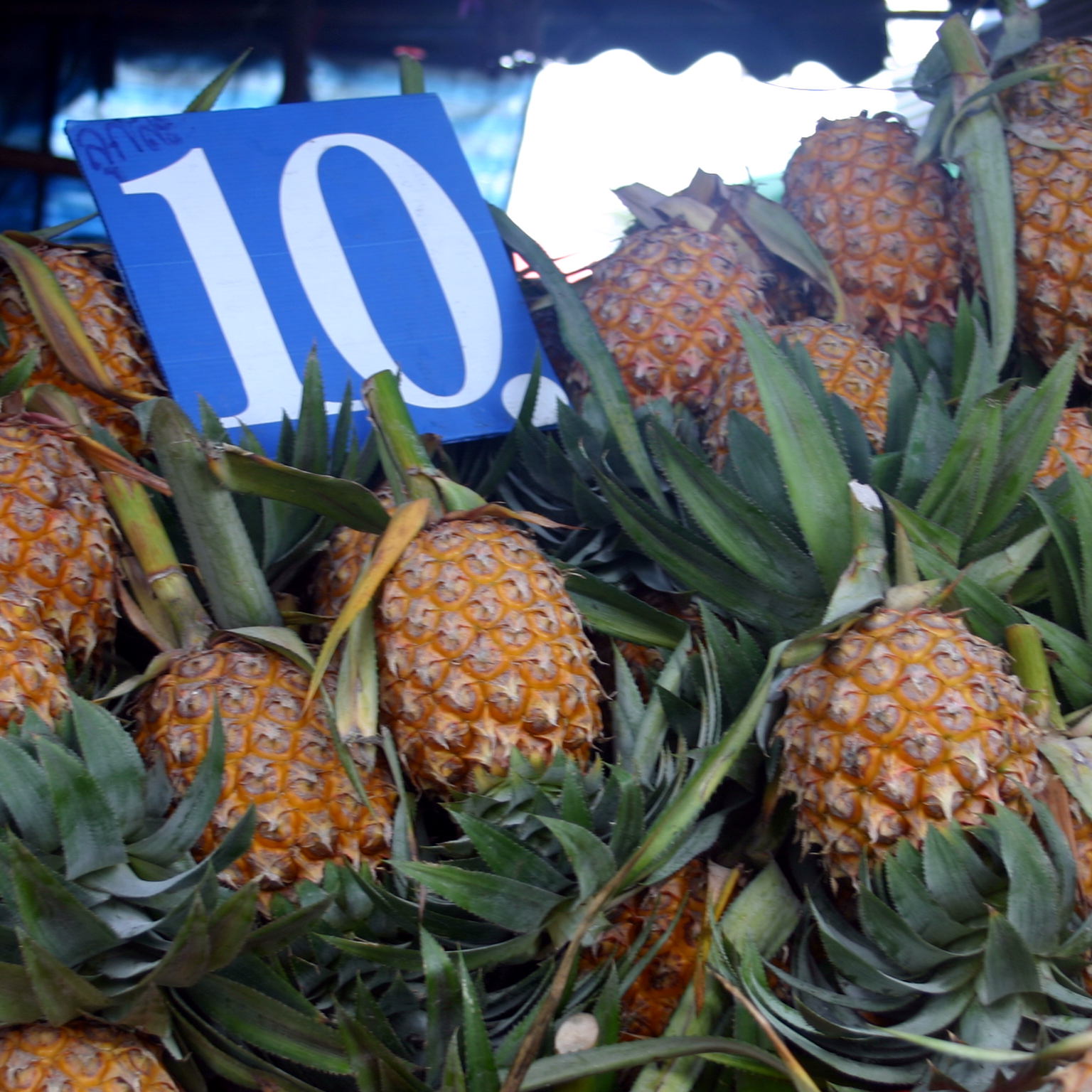Like the chillies that are now a fundamental part of Thai cuisine, pineapples originated in the New World and were bought to Asia by the Europeans. The fruit is now a part of the everyday landscape of Thailand. No fruit cart can ply the streets without having its bins stocked with pineapple.
The variety favored by Thais is sweet and juicy, although several other types are available. Occasionally you’ll see tiny pineapples not much bigger than a tennis ball for sale in the markets. Most of Thailand’s pineapple crop, which accounts for about 18% of the world’s production, is grown in the provinces just south of Bangkok. However, many northern provinces have their own varieties which can be quite sweet and highly prized at the fresh market, although none of them are used for canning.

If you visit the wholesale Muang Mai market in Chiang Mai, you will find many stalls piled high with pineapples, especially along Wichayanon Road, which fronts the river. Stacked in large plastic crates under canvas-roofed marquees, huge pyramids of pineapples are offered for sale in a variety of shapes, sizes and colors. One popular type is aptly called “honey” in Thai. It has a large elongated head, with a skin that retains a greenish tint even when fully ripe. Another variety has a more rounded head and yellowish skin when ripe.
Regardless of the type, vendors will sell a whole pineapple for only about 25 U.S. cents. From fruit carts, where the vendor will cut up the fruit into bite sized pieces, customers usually purchase half a head for about the same price.